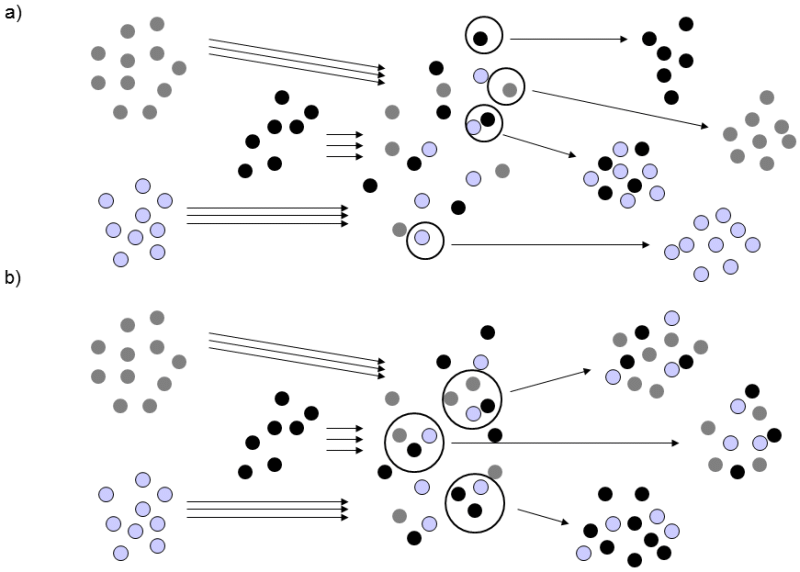VII.2.3 Emergence and disappearance of local populations within a metapopulation may contribute to both higher and lower genetic polymorphism of the population.
Some metapopulations consist of local populations persisting in a given location in the long-term or relocating as a whole within the geographic range of the species. Individual populations exchange migrants but their gene pools exhibit long-term continuity in time. Other metapopulations, to the contrary, experience population turnover, i.e. a permanent emergence and disappearance of local populations (i.e. subpopulations). For example, species that sustain themselves on temporary sources of nutrients (such as rotting fruit, carrion) or whose range is linked to intermittent successive stages of some biotopes (forest openings, puddles) create local populations existing for only a more or less limited and transient period of time in a given location and then disappearing. In the meantime, new locations suitable for the creation and existence of local populations appear in other parts of the range of the given species and some of these locations are eventually actually colonized by representatives of the species. However, it is the migrants that colonize new locations. The way in which new populations are established, namely the genetic composition of the founding population, determines whether population turnover will further intensify or, to the contrary, will weaken the process of maintaining the genetic polymorphism of the local populations by gene flow (Fig. VII.3). If the founders of a new local

Fig. VII.3 Impact of the way in which new populations are established on intrapopulation and interpopulation polymorphism. If subpopulations are always established by a small number of individuals (a), the metapopulation exhibits a low level of polymorphism inside partial populations, with major differences in the composition of the gene pools of partial subpopulations. If the number of individuals founding the subpopulations is, on the other hand, larger (b), population turnover increases polymorphism inside partial subpopulations and reduces the differences between the gene pools of subpopulations.
population come from a small number of populations or just one single population, population turnover leads to a relative decrease in the genetic polymorphism within the local populations. On the other hand, if the founders come from a large number of local populations, genetic polymorphism of the local populations in a metapopulation with higher population turnover could even be augmented. However, the size and genetic uniformity of the founding population does not in any way affect the overall amount of genetic polymorphism in the metapopulation, but only changes its distribution. Although populations with large genetic polymorphism of the founders’ population exhibit greater founding population polymorphism, the genetic differences between the local populations are actually smaller (Harrison & Hastings 1996).
